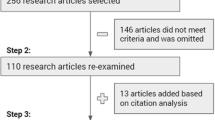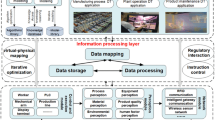Abstract
Mould design usually lies on the critical path of new product development. The mould-design process generally involves complex and multi-related design problems. The use of the IDEF0 descriptive model or similar tools alone in the analysis of complicated processes like the mould-design process usually encounter difficulties due to the complexity of the process. A quantitative analysis model thus seems necessary to supplement the IDEF0 tool for better modeling and simulation of complicated processes. In this paper, we propose to use the colored Petri nets tool for systematic and through analysis of the complicated mould-design process. We introduce an effective modeling and simulation language-hierarchical timed colored Petri-net-based workflow nets (HTCPNWF-nets). The rules for translating IDEF0 into HTCPNWF-nets have been developed. After mapping IDEF0 model onto HTCPNWF-nets, several performance analyses can be achieved by simulation of HTCPNWF-nets model. The proposed methodologies have been successfully applied to the mold design process.
Similar content being viewed by others
References
Negele H, Fricke E, Schrepfer L et al (1999) Modeling of integrated product development processes. Proceedings of the 9th Annual Symposium of INCOSE, UK
Zu X, Huang HZ (2004) Research on product development process modeling. The Eighth International Conference on Computer Supported Cooperative Work in Design, Xiamen, PR China
Mok CK, Chin KS, Ho KLJ (2001) An interactive knowledge-based CAD system for mould design in injection moulding processes. Int J Adv Manuf Technol 17:27–38
Tang D, Eversheim W, Schuh G (2003) Concurrent metal stamping part and die development system. Proc Inst Mech Eng B J Eng Manuf 217:805–825
Jensen K (1996a) Coloured Petri nets: basic concepts, analysis methods, and practical use (vol 1), 2nd edn. Springer, Berlin Heidelberg New York
Jensen K (1996b) Coloured Petri nets: basic concepts, analysis methods, and practical use (vol 2), 2nd edn. Springer, Berlin Heidelberg New York
van der Aalst WMP (1998) The application of Petri nets to workflow management. J Circuits Syst Comput 8:21–66
van der Aalst WMP (1997) Verification of workflow nets, application and theory of Petri nets 1997, volume 1248 of lecture notes in computer science. Springer, Berlin Heidelberg New York, pp 407–426
CPN group at the Department of Computer Science (2005) University of Aarhus, Denmark. Online at: http://www.daimi.au.dk/CPnets/
Emden RG, John HR (2004) The standard ML basis library. Cambridge University Press, New York
Zu Xu, Huang HZ, Zhou F (2004) Recourse manager modeling in product development workflow. The Europe-Asia Symposium in Advanced Engineering Design and manufacture for globalization (EASED)
Chin KS, Wong TN (1996) Knowledge-based evaluation for the conceptual design development of injection molding parts. Eng Appl Artif Intell 9(4):359–376
Acknowledgements
The authors wish to thank the funding support from the Hong Kong SAR Research Grant Council in the project no. CERG #CityU1203/04E.
Author information
Authors and Affiliations
Corresponding author
Rights and permissions
About this article
Cite this article
Chin, K.S., Mok, C.K. & Zu, X. Modeling and performance simulation of mould-design process. Int J Adv Manuf Technol 34, 236–251 (2007). https://doi.org/10.1007/s00170-006-0584-5
Received:
Accepted:
Published:
Issue Date:
DOI: https://doi.org/10.1007/s00170-006-0584-5




